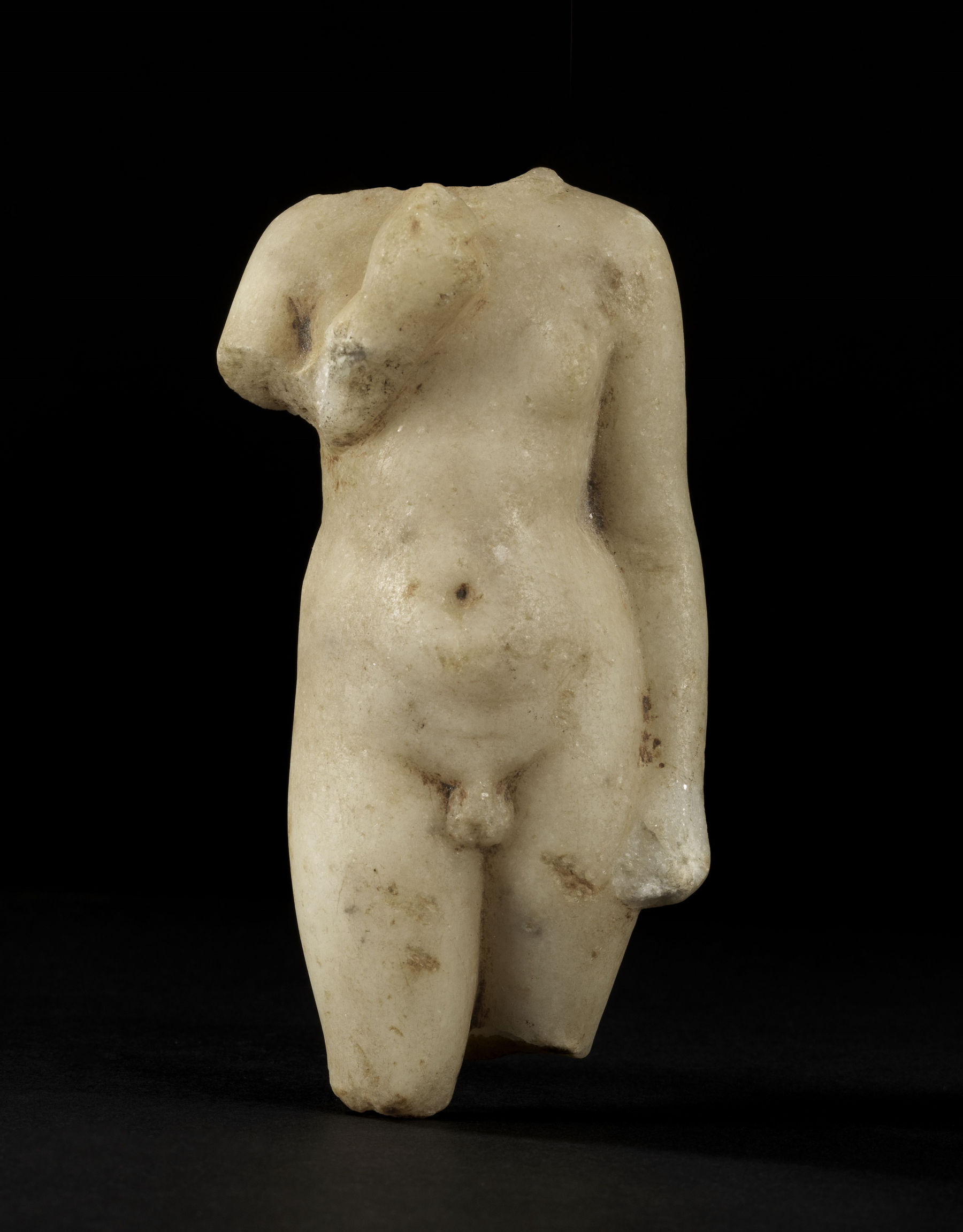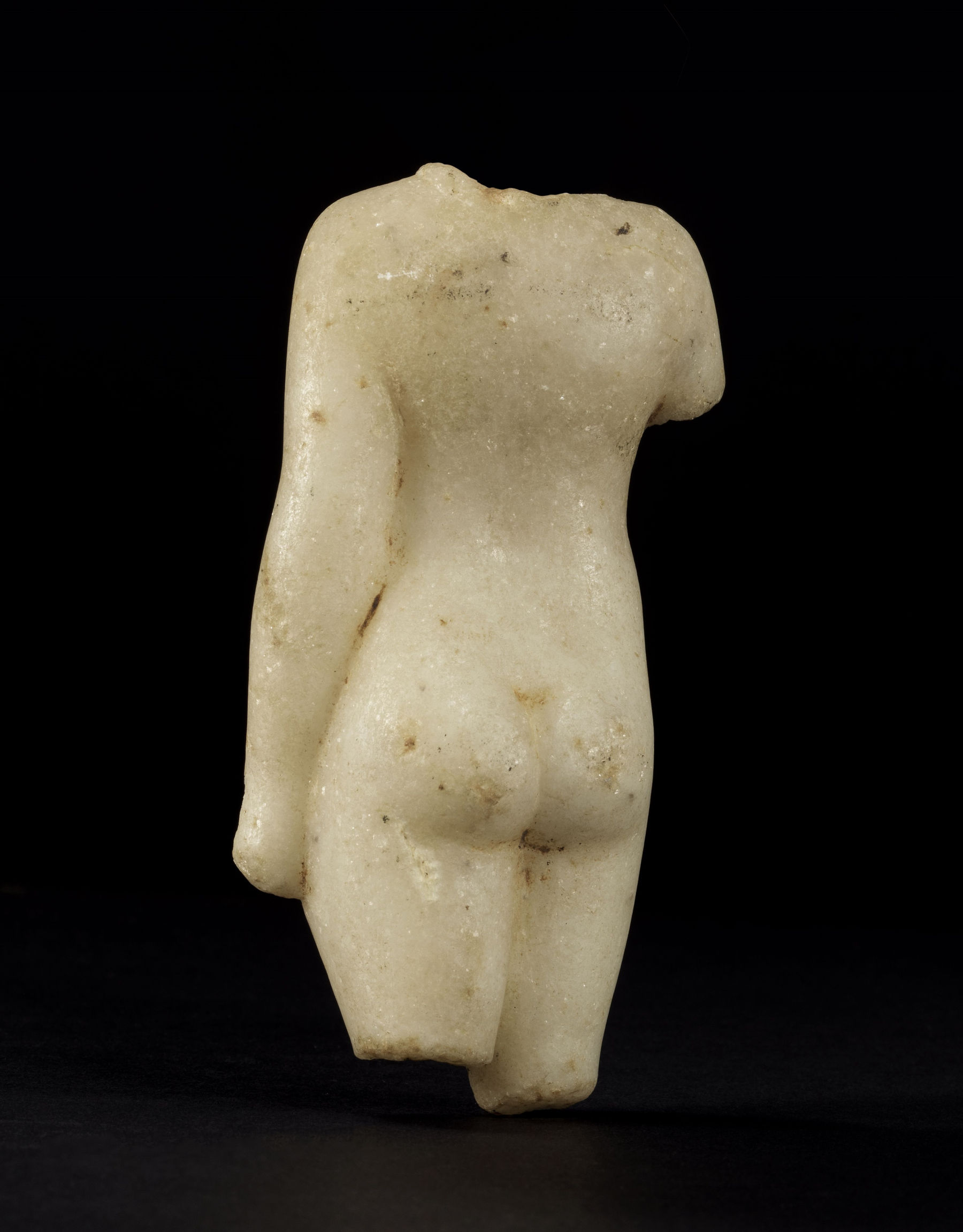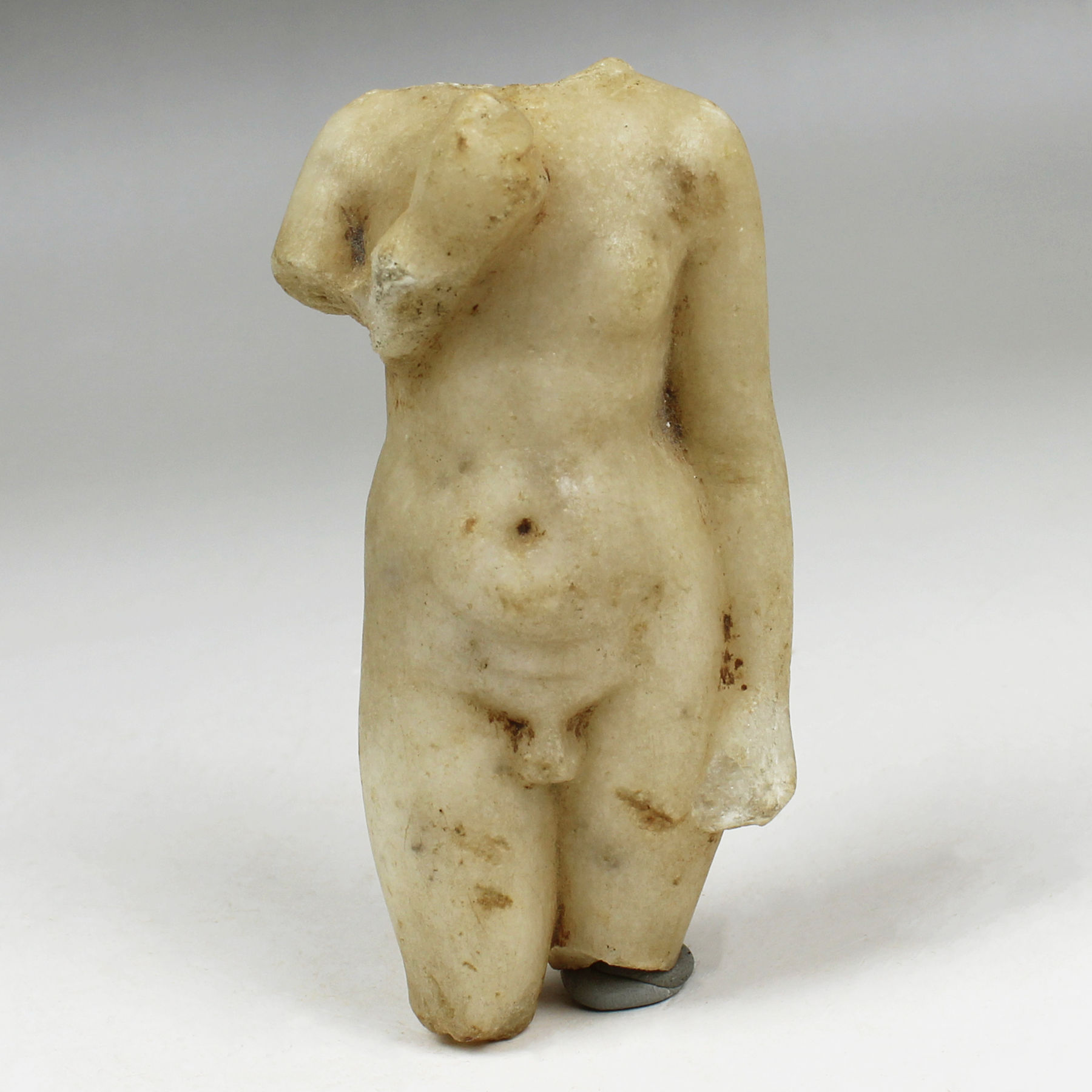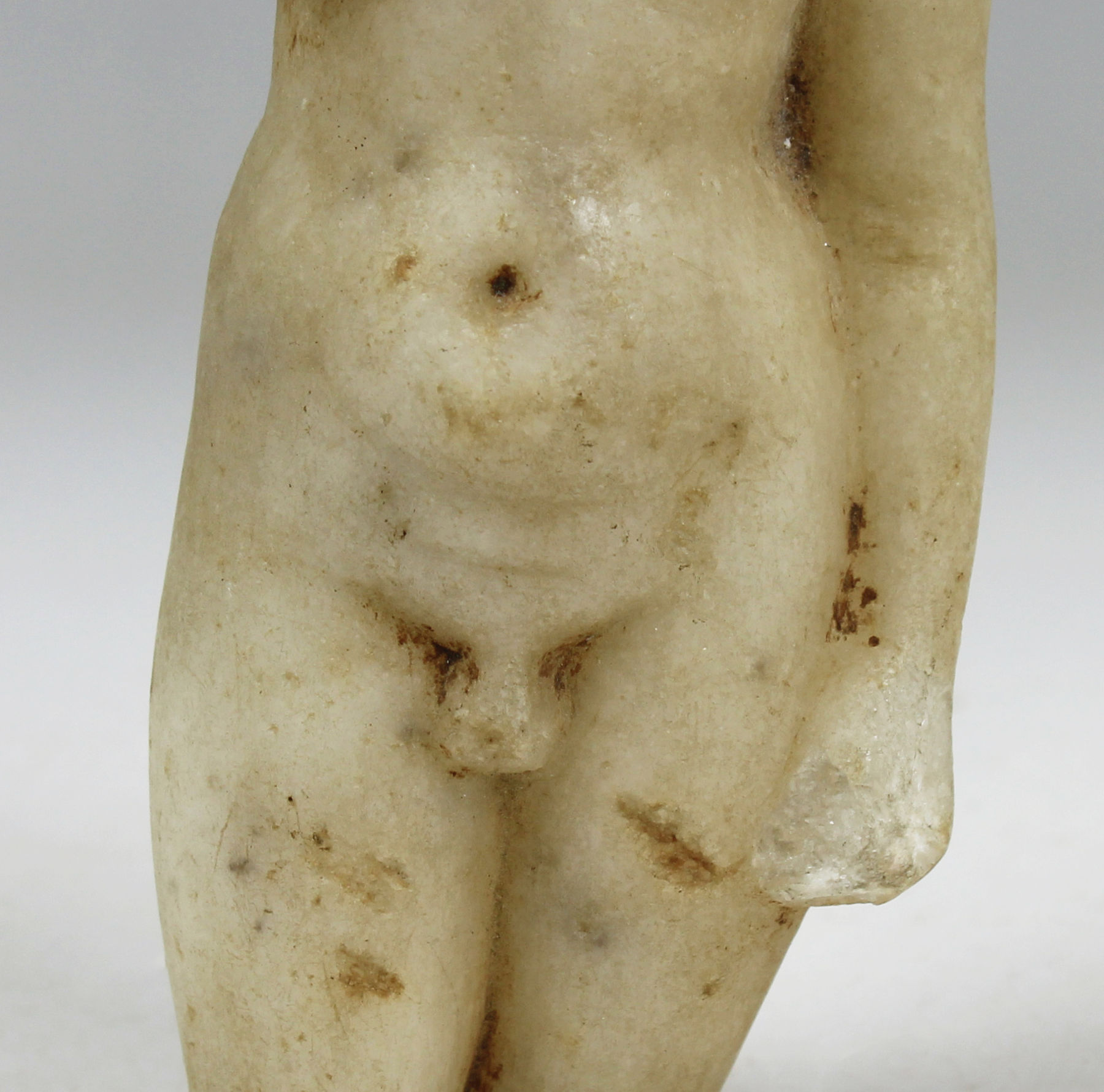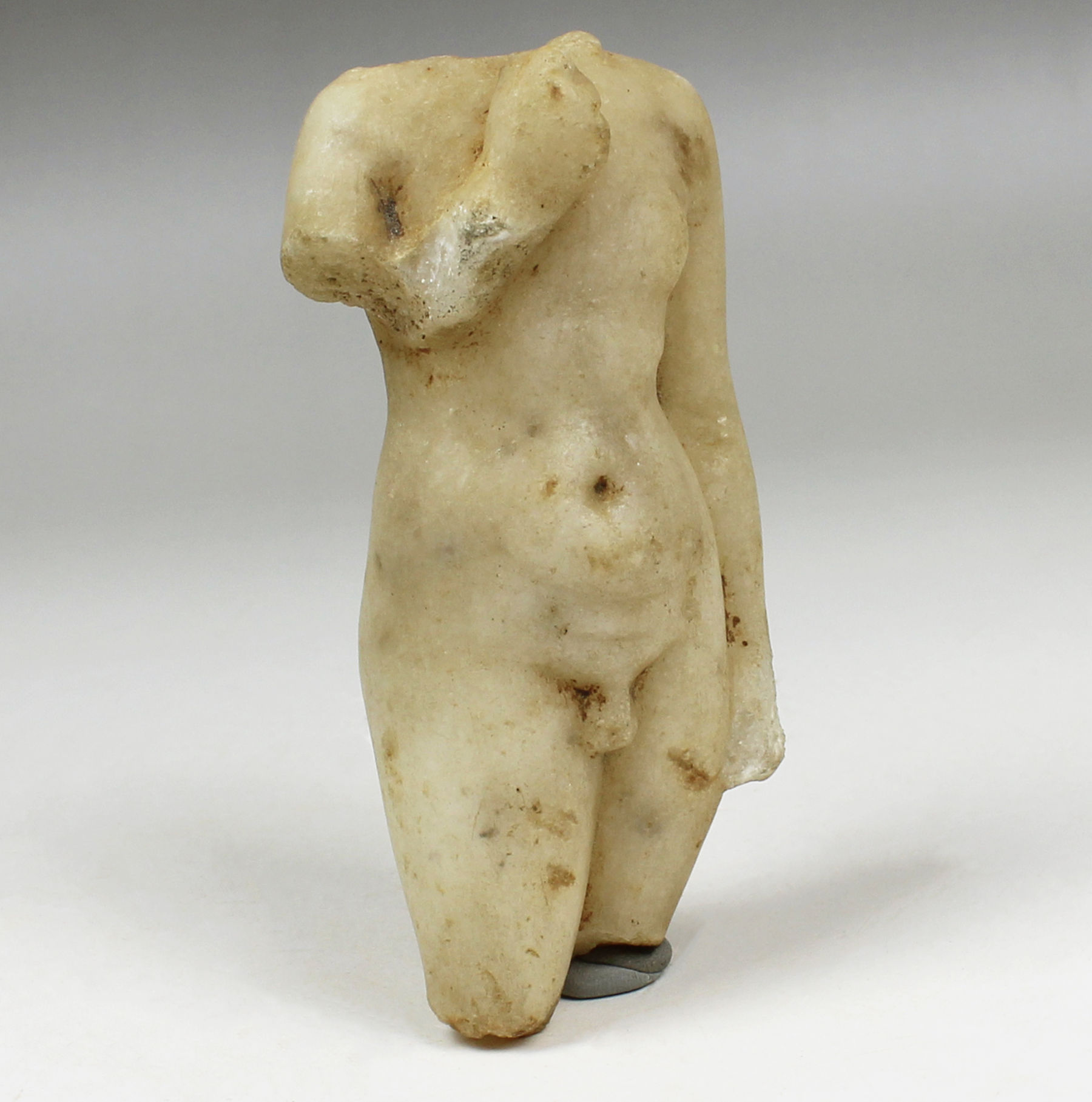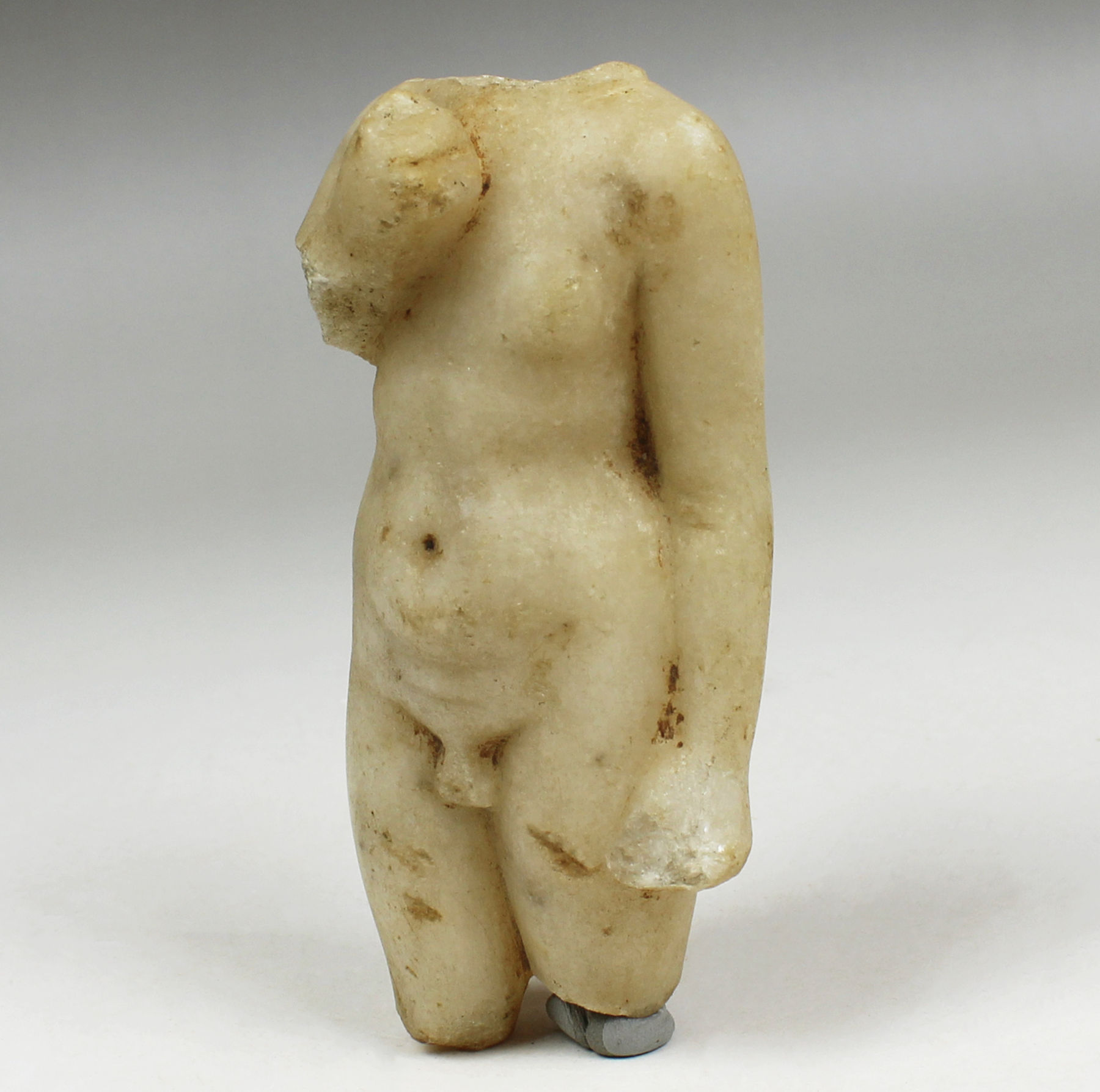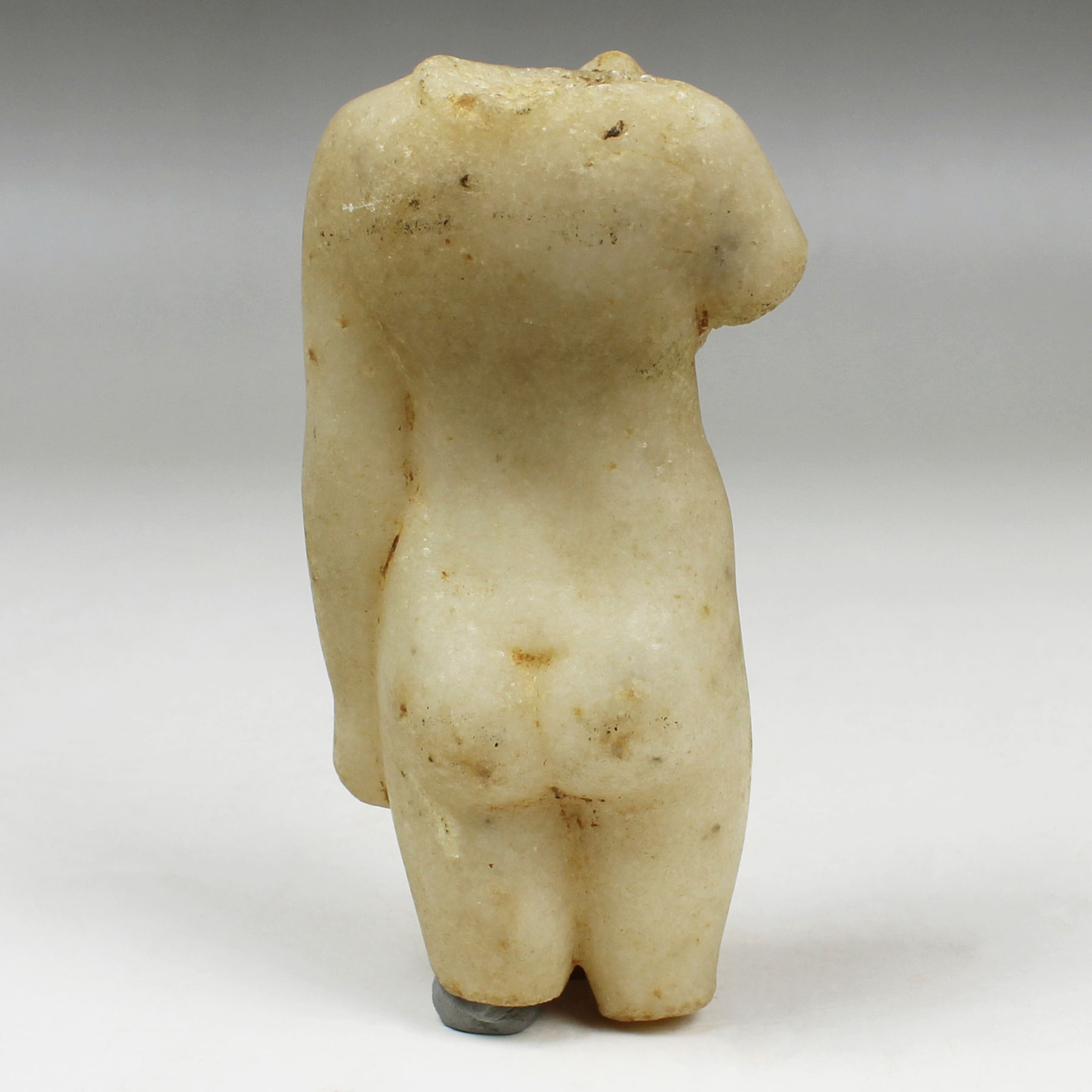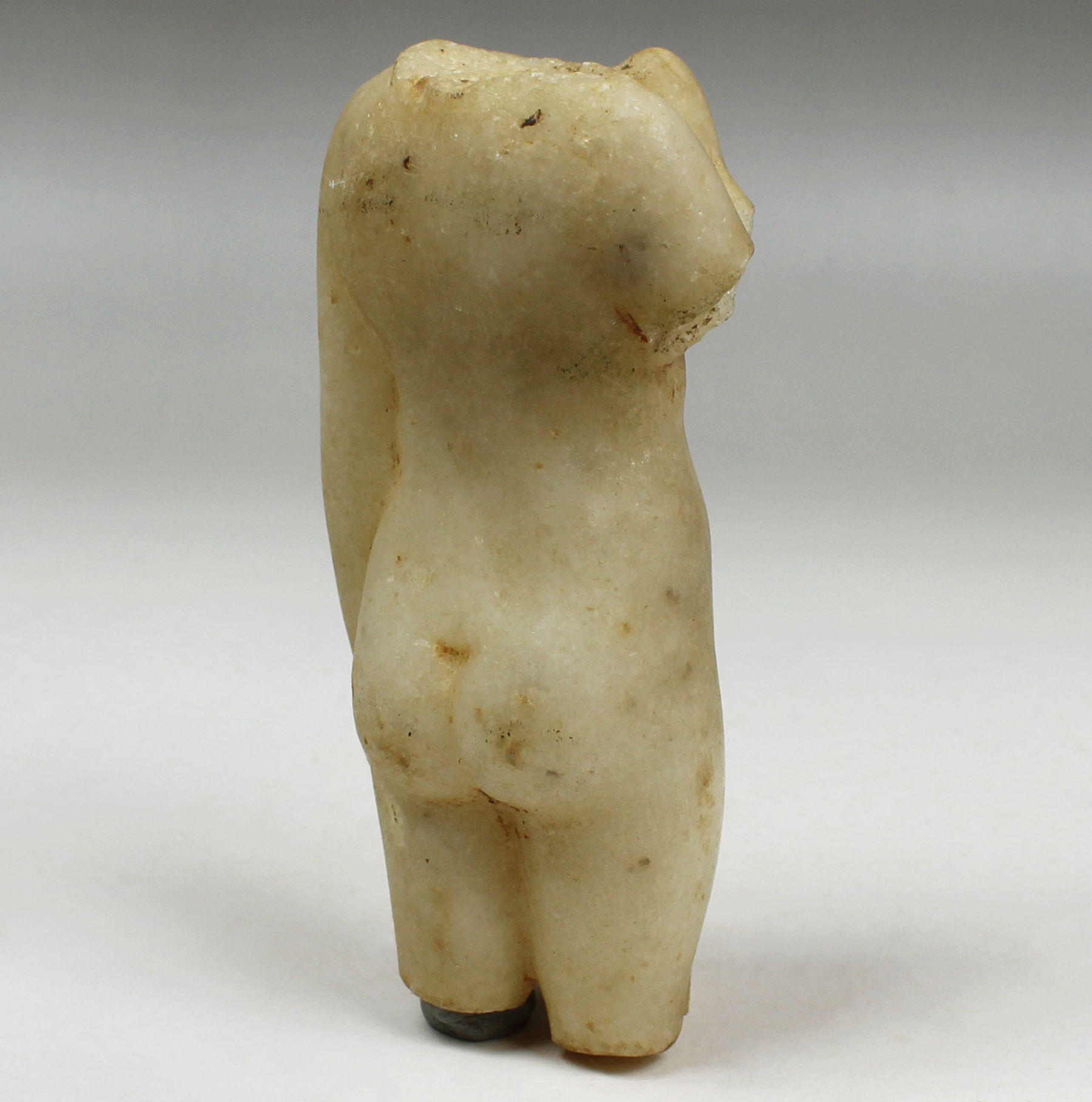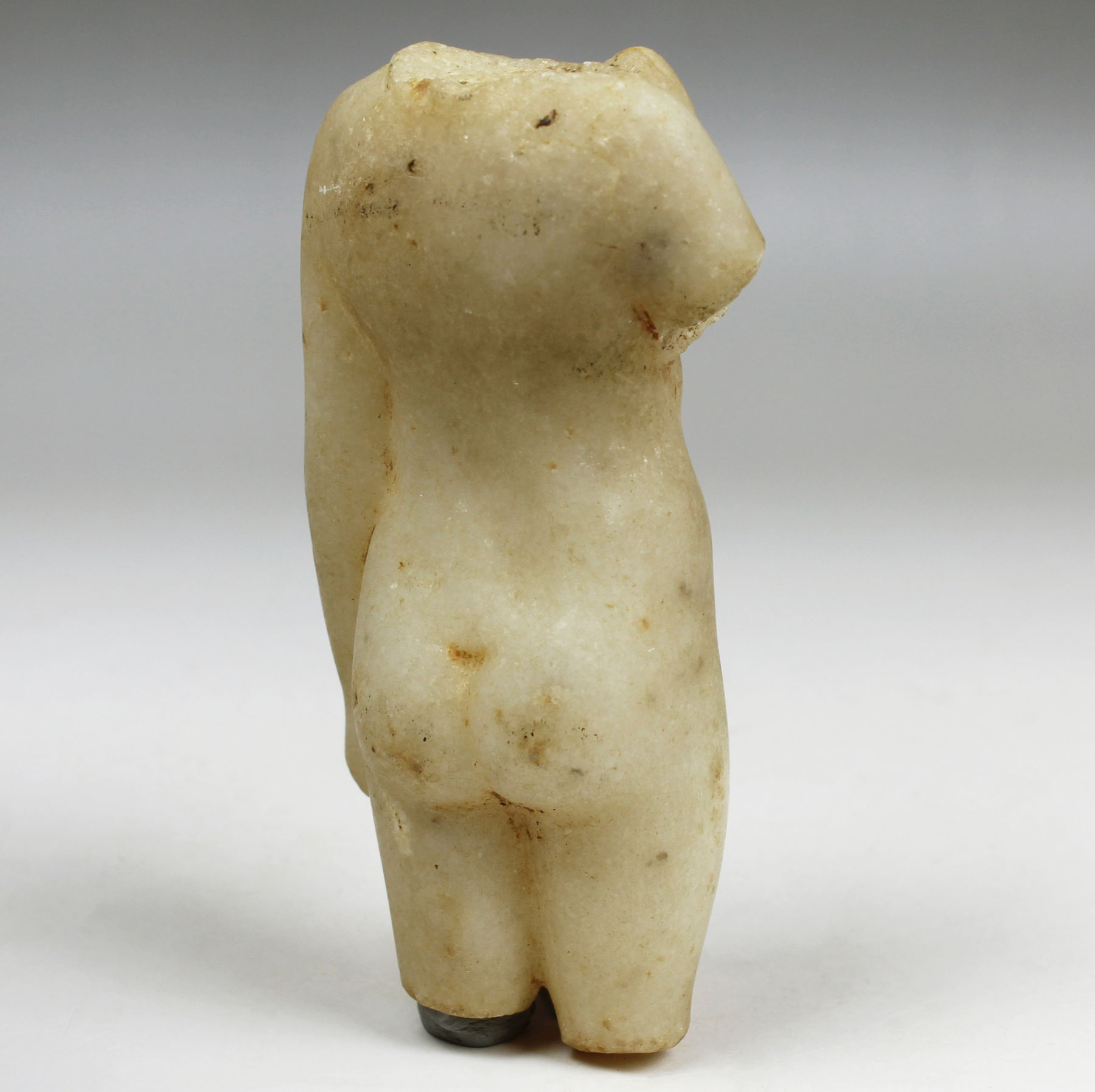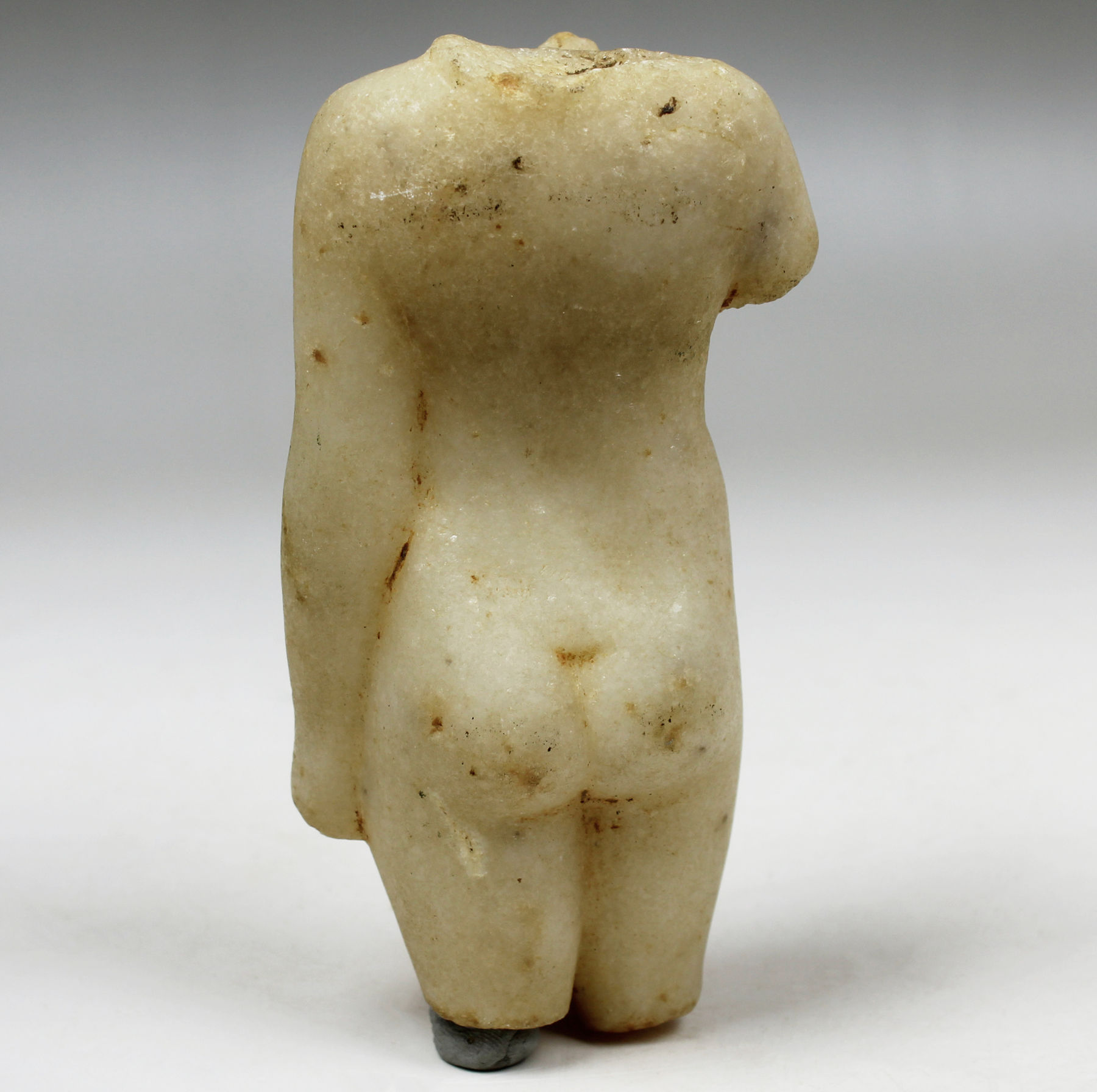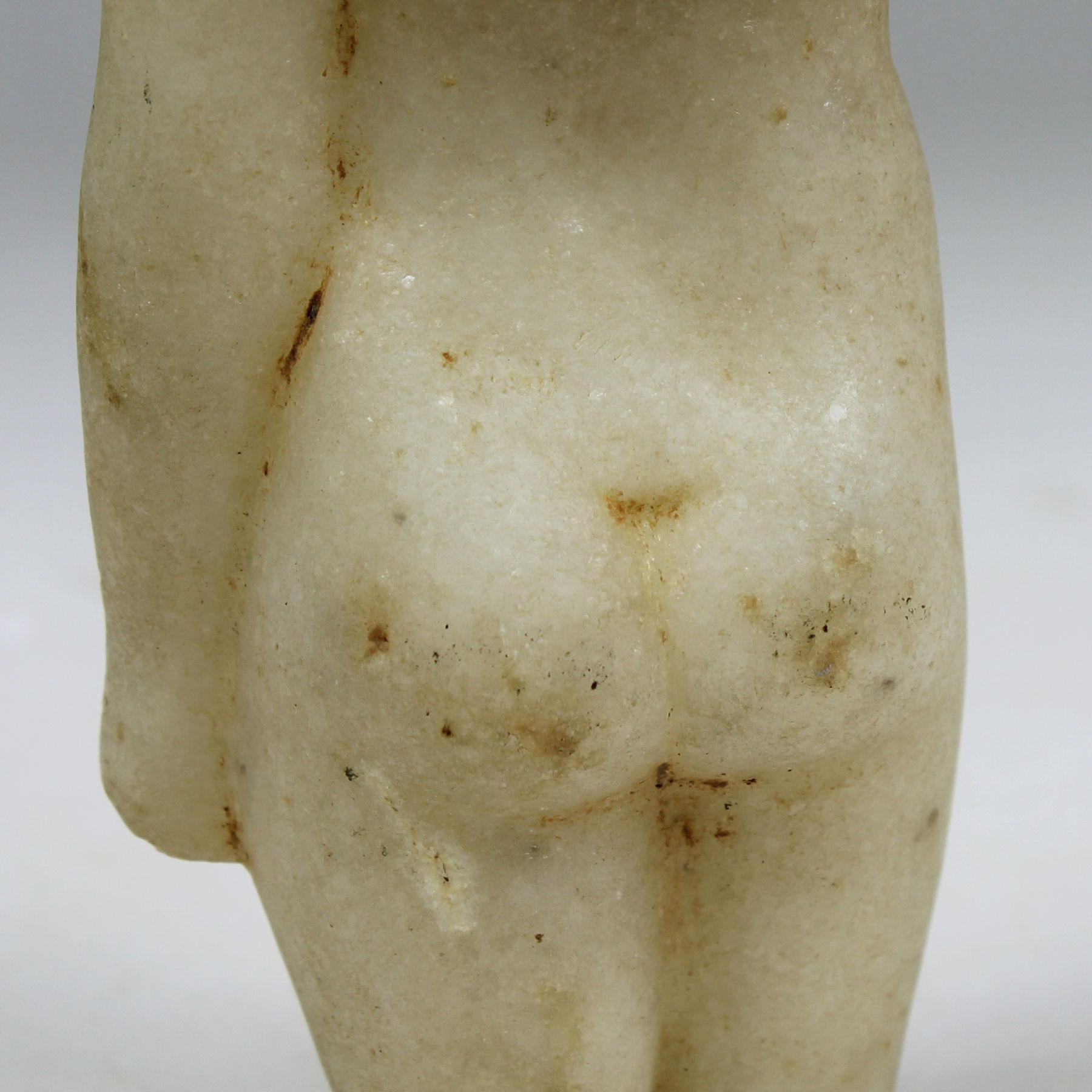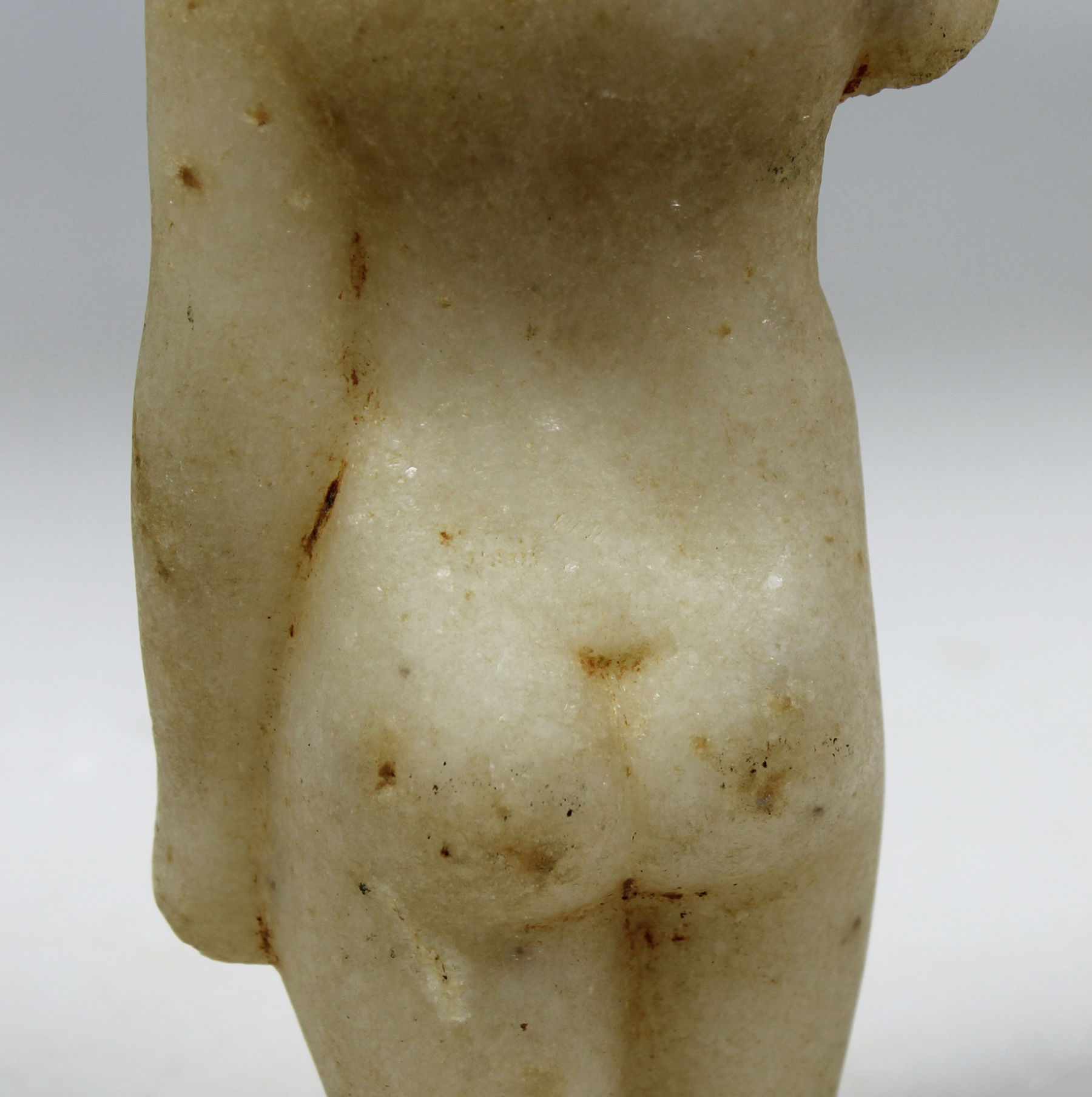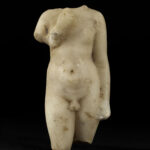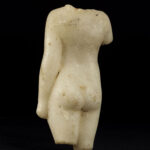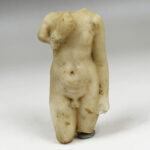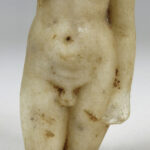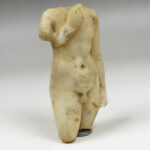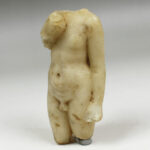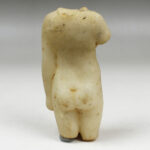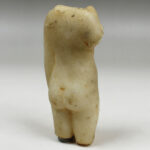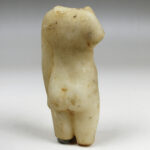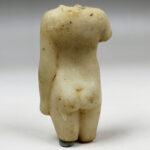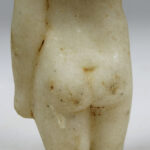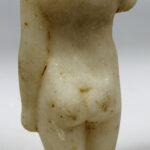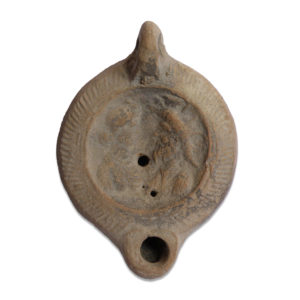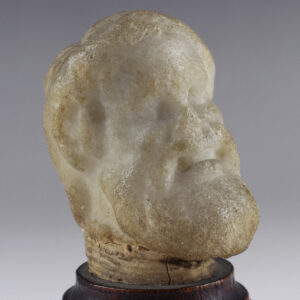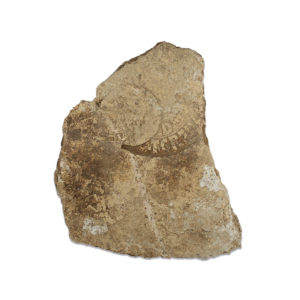Description
| ITEM | Statuette of Harpocrates |
| MATERIAL | Marble |
| CULTURE | Roman |
| PERIOD | 1st – 2nd Century A.D |
| DIMENSIONS | 110 mm x 60 mm x 34 mm |
| CONDITION | Good condition |
| PROVENANCE | Ex Swiss private collection, acquired between 1970 – 1990 |
In the Roman period, Harpocrates continued to be a significant deity, albeit with adaptations and reinterpretations influenced by both Roman and Egyptian religious traditions. Harpocrates was originally an ancient Egyptian god associated with silence, secrets, and confidentiality. In the Hellenistic and Roman periods, the cult of Harpocrates spread throughout the Mediterranean, and the god underwent syncretism with various Greek and Roman deities, blending cultural and religious influences.
In Roman art and mythology, Harpocrates is often depicted as a young boy with a finger to his lips, symbolizing the gesture of silence. The Romans associated him with the concept of confidentiality and discretion, making him a popular figure in various contexts, including funerary art and domestic worship. The Roman adaptation of Harpocrates integrated elements of the original Egyptian symbolism with the broader Greco-Roman religious landscape, showcasing the fluidity and adaptability of ancient religious beliefs during this period.
Devotion to Harpocrates also found a place in mystery cults and esoteric traditions in the Roman Empire. The god’s association with silence and secrecy made him a fitting figure for cults that emphasized initiation rites and hidden knowledge.


